Monday, January 25 2021 by Sarah Mott
Having joined the company remotely, I haven’t yet had the privilege of experiencing the beauty of the building nor getting stuck in and physically exploring the archive.
Like many of us, I’ve had to adapt to digital learning and exploring the archive online, which of course has come with its challenges. As I have limited knowledge of the inner workings of ships, I have spent hours staring at my screen trying to understand the plans of a donkey boiler or a survey of a ship. As you can imagine, it has been a bit of a struggle…
With this in mind, I would have to say that my favourite ‘thing’ I have found in the ‘digital’ archive so far is the pottery model of Edward Lloyd’s coffee house (coffee and art seemed a bit more up my street).
Hopefully when I am finally able to see the model in person, I will be able to say the images do it justice!
Before I dive into the details of the model, I should briefly explain the relevance of Edward Lloyd’s coffee house to Lloyds Register.
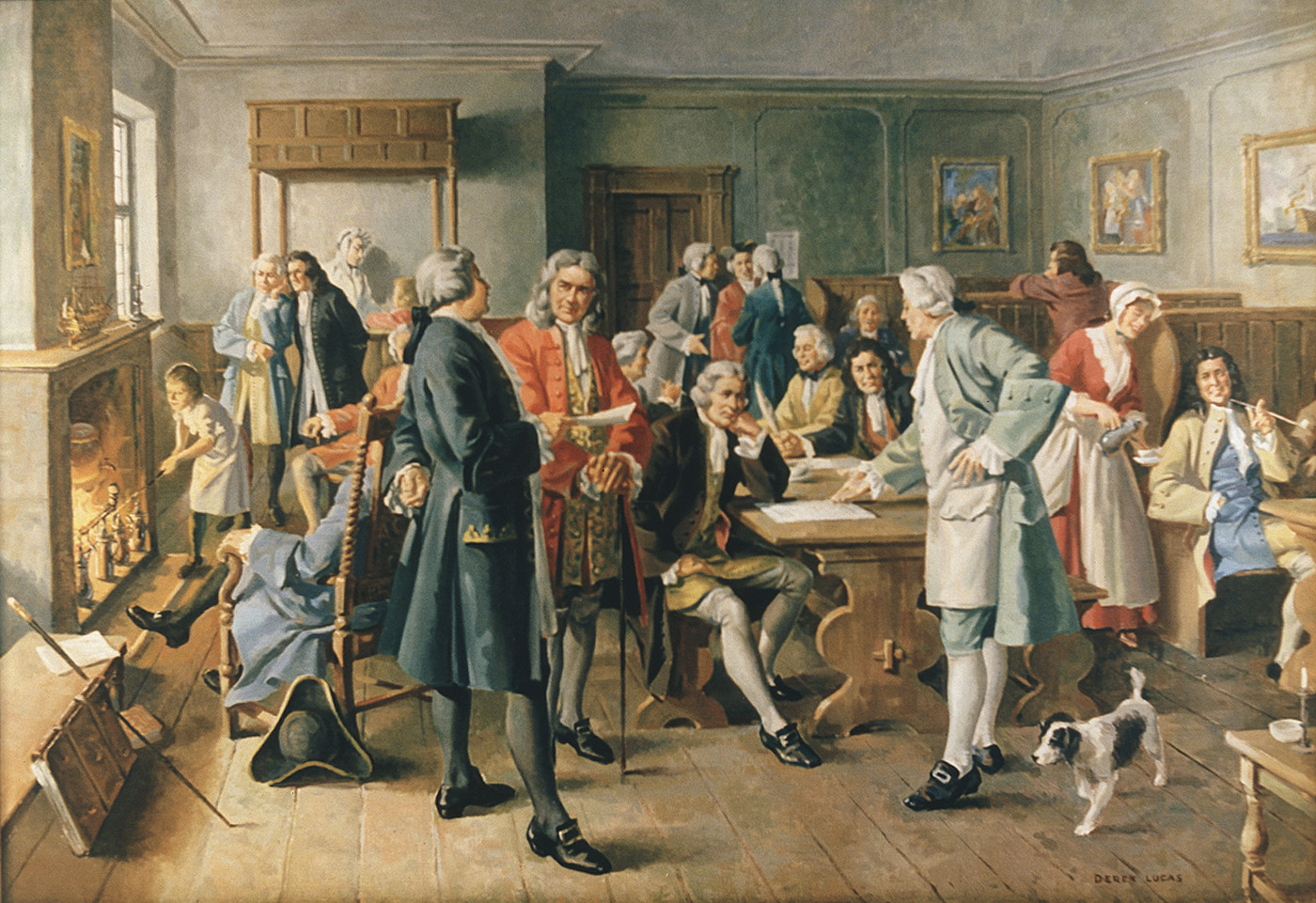
In the seventeenth and eighteenth century, the coffee house played a vital role in politics and commerce. Coffee houses became settings for intellectual life where people would come together and debate and converse the topics of the day! For the first time, public opinion could be vented.
Most coffee houses in England had a specialised interest, whether it be a specific industry or political party. Edward Lloyd for example, (who first began his coffee business in 1689) began to foster a name for himself in the shipping world. By 1691, Edward Lloyd’s coffee house was known for its connections in the shipping business, whereby Edward collected as much shipping news, gossip and letters as possible which was then distributed to his clientele.
Lloyd’s Register began in this very coffee house in 1760, where eleven men came together to discuss the safety of their ships and proposed plans to inspect ships before they set sail to check if they were seaworthy. This marked the beginning of the classification and registering of ships worldwide.
The model of Edward Lloyd’s coffee house is a visual reminder of the humble beginnings of Lloyd’s Register.
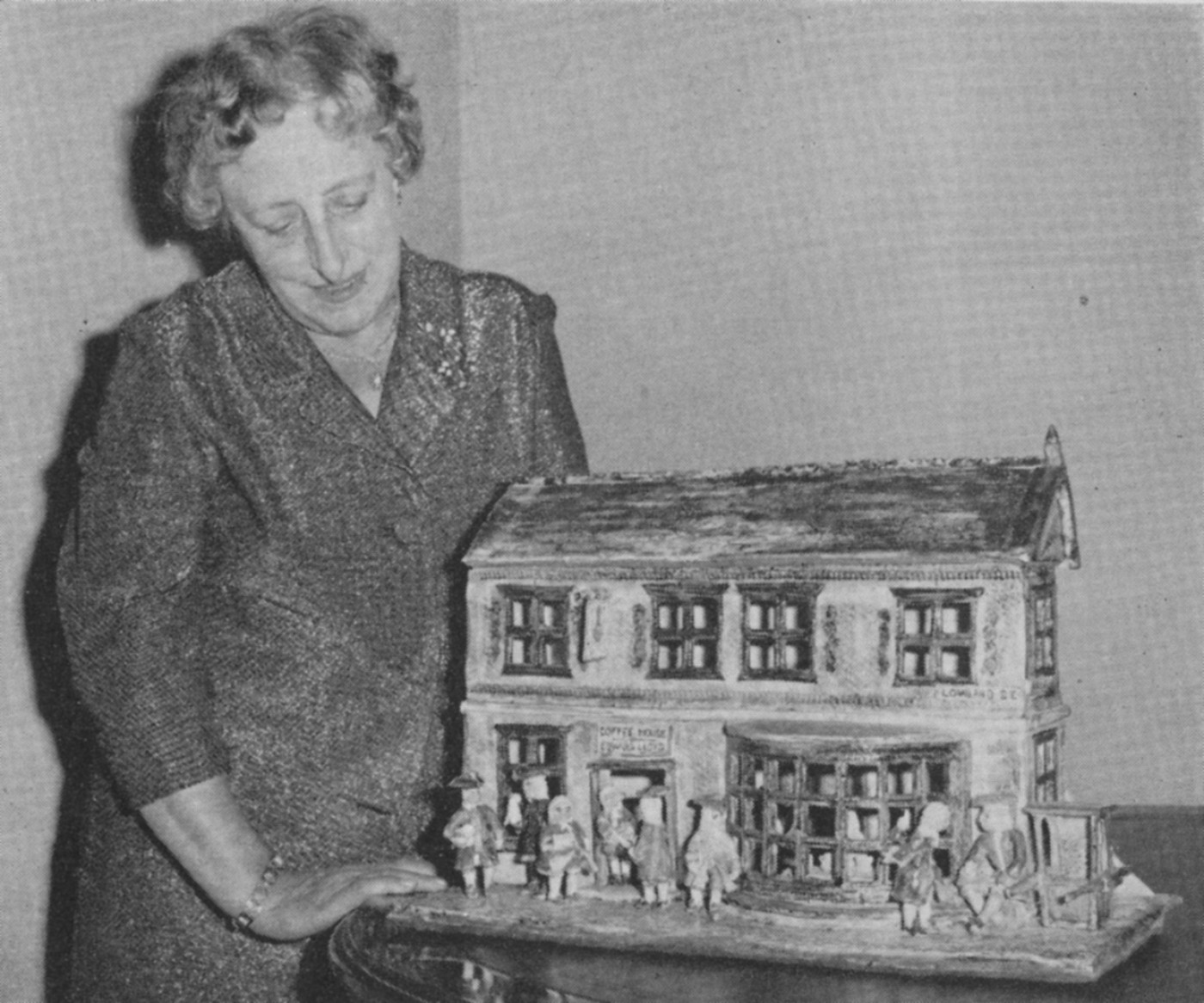
The model of the coffee house was presented in 1964 by Mrs G A Campbell (the wife of Lloyd’s Register employee and Arts Guild member, J F Campbell). Lloyd’s Register was known for having a number of ‘social’ clubs- most notably the Cricket Club but also guilds which catered for Lloyd’s employees who were less sporting minded. The Arts Guild ran between the 1950s and 1970s and was open to all Lloyd’s Register staff and their families. An exhibition of their crafts was held each year in the General Committee Room.
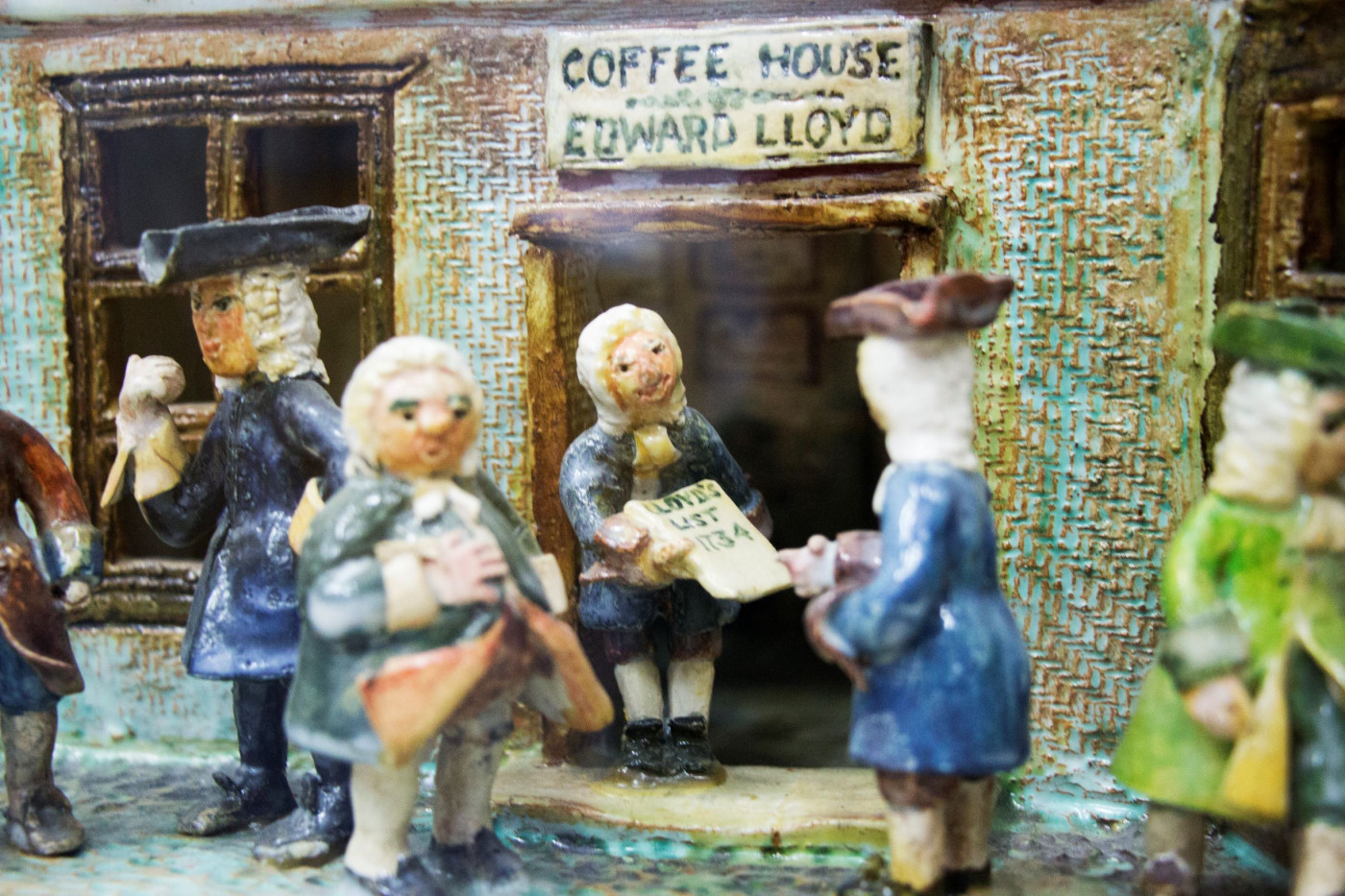
It is believed that Mrs Campbell took inspiration from an image of the coffee house drawn by David Knight that appeared in the Lloyd’s 200th anniversary book published in 1960. There are clear similarities between the drawing and the model; particularly the coffee house sign which is exactly the same and the sedan chair which is featured outside the coffee house on the right side of the model as it appears in the drawing.

In the images you can see a close up of the figures made to imitate the customers and Edward Lloyd outside the coffee house holding a copy of Lloyd’s News.
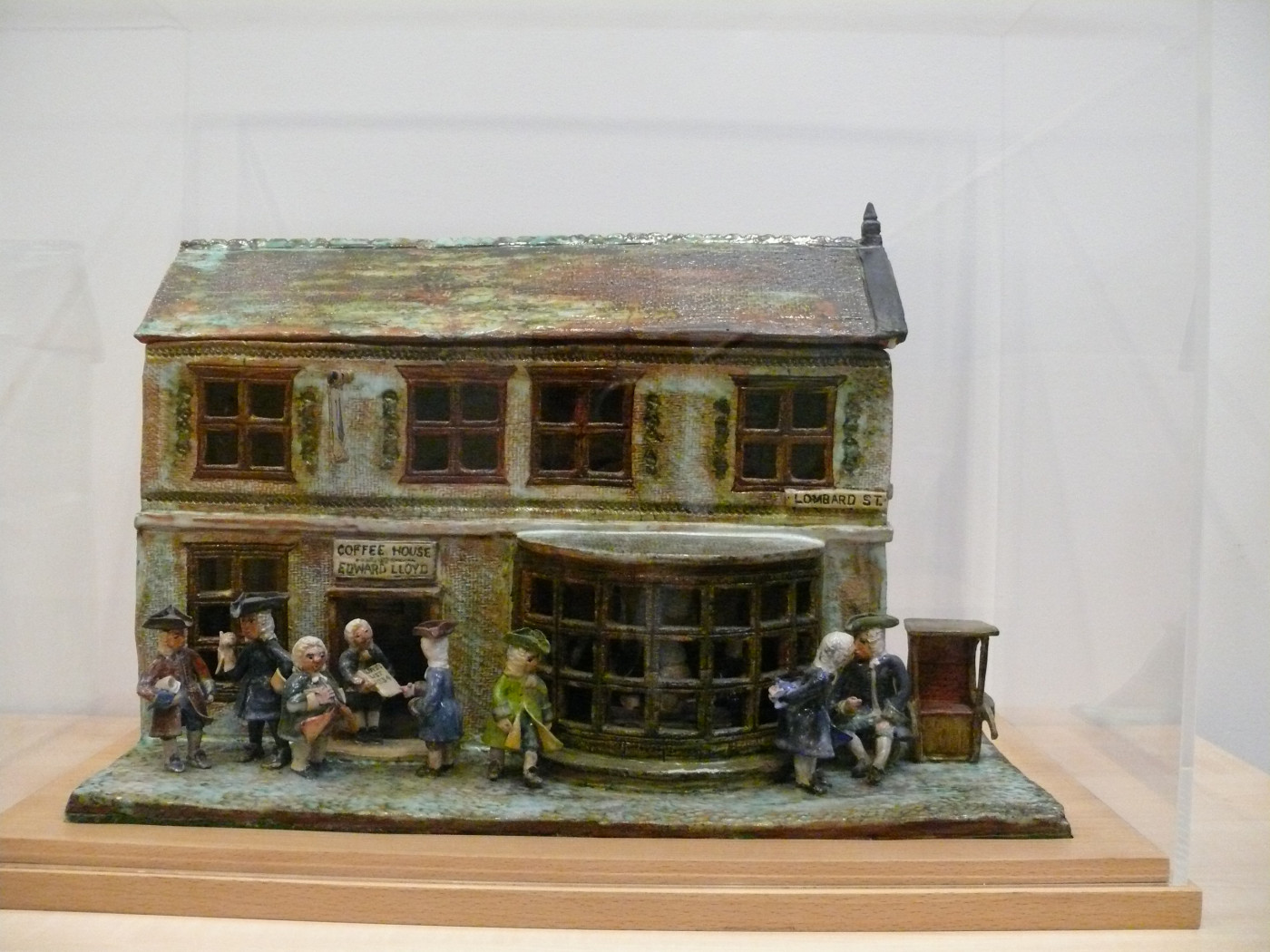
The model was forgotten about for over twenty years before it was discovered by our own Curator of Maritime History and Heritage, Barbara Jones, in 1995, in a storeroom in the basement of the Coronation House when the company was moving out of Fenchurch Street for refurbishment. When it was discovered, there was only slight damage to the sign and one arm of the sedan chair. Once the model was restored and placed in an exhibition case, it was put on display in the Heritage and Education Centre and has remained an integral part of the department ever since.
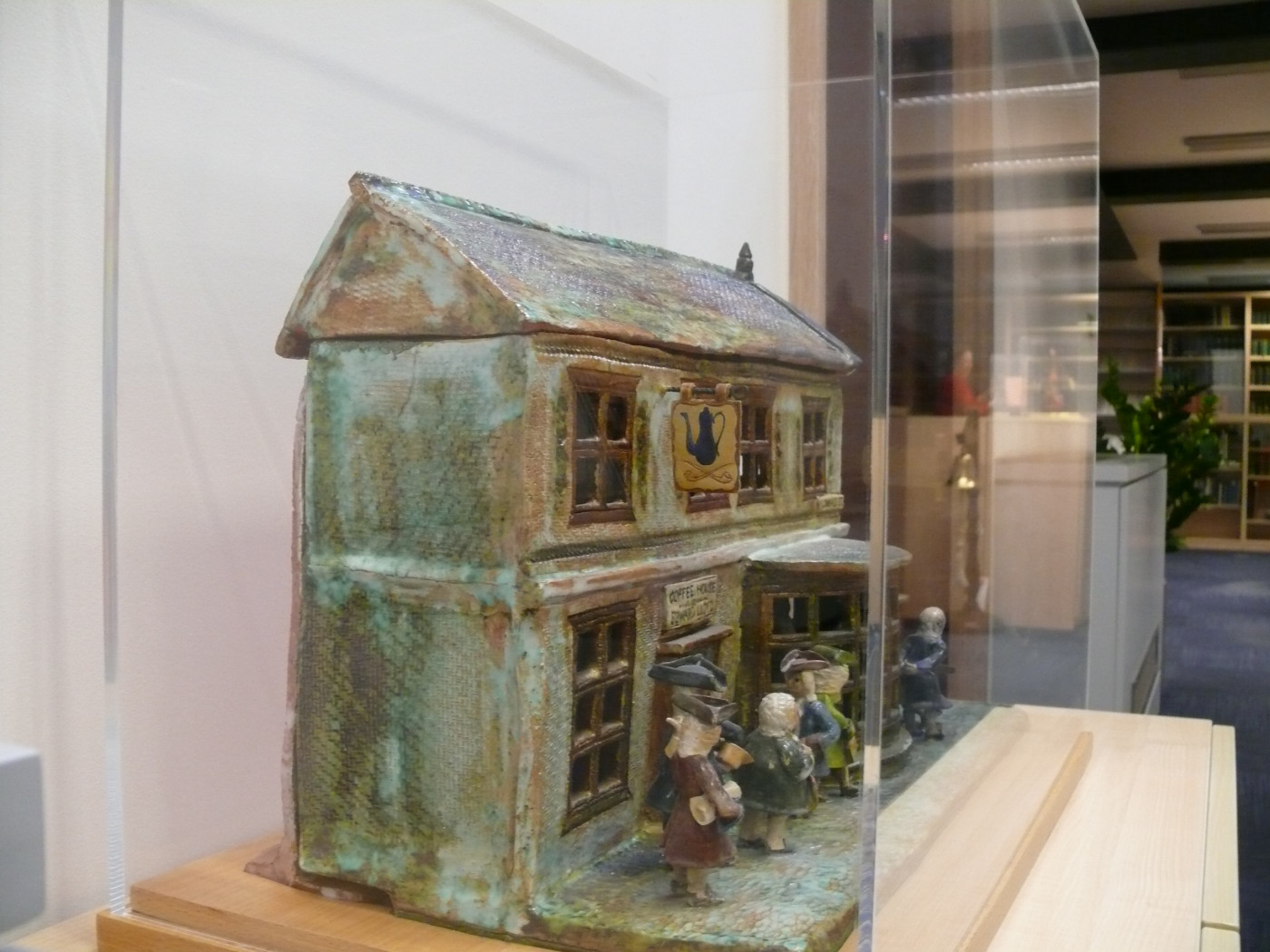
This model is one of a few remaining mementos of what an eighteenth coffee house would have looked like. Mrs Campbell’s model really does bring history to life!
If you wish to know more about the history of Edward Lloyd’s, please take a look at our webinars and online exhibitions and don’t forget to follow our social media pages to keep up with our content.

